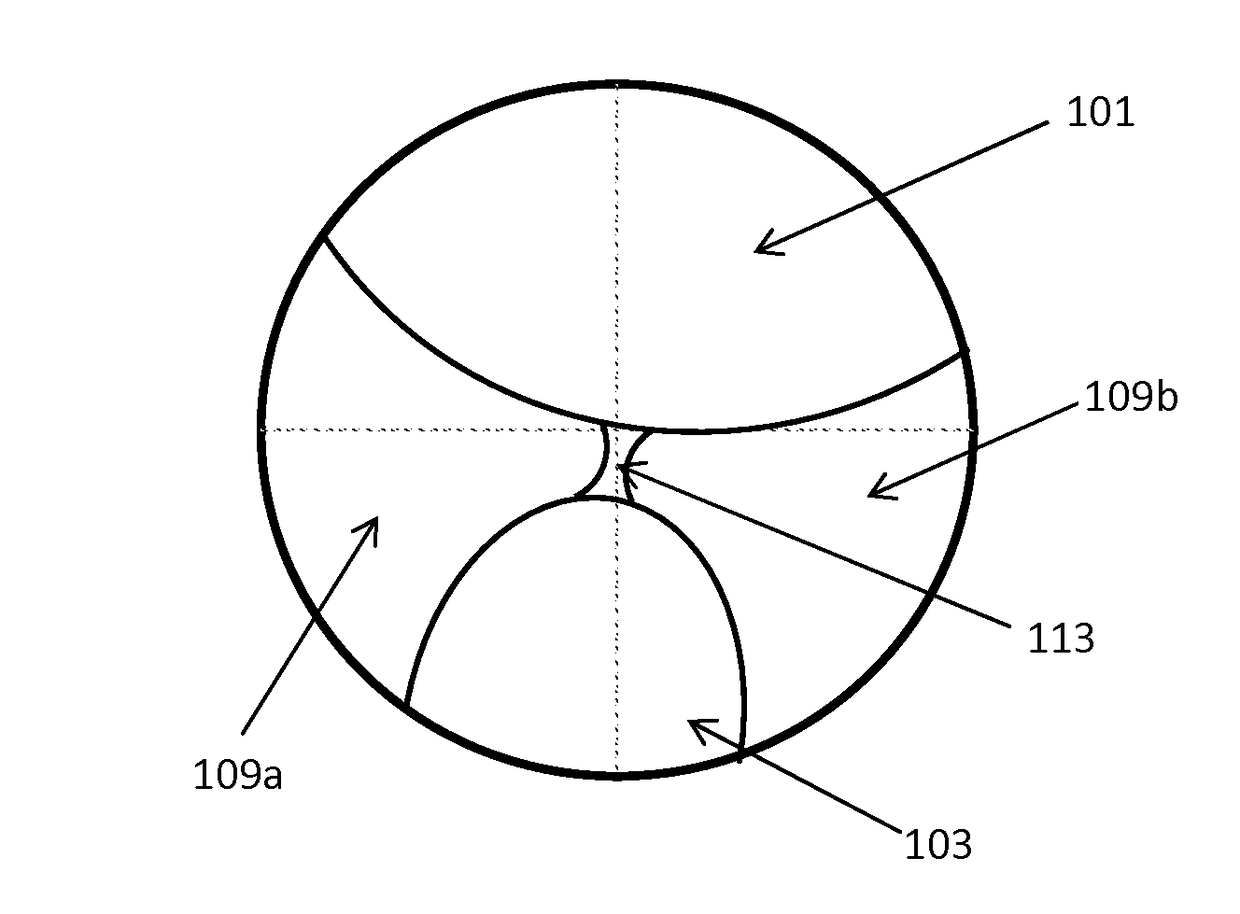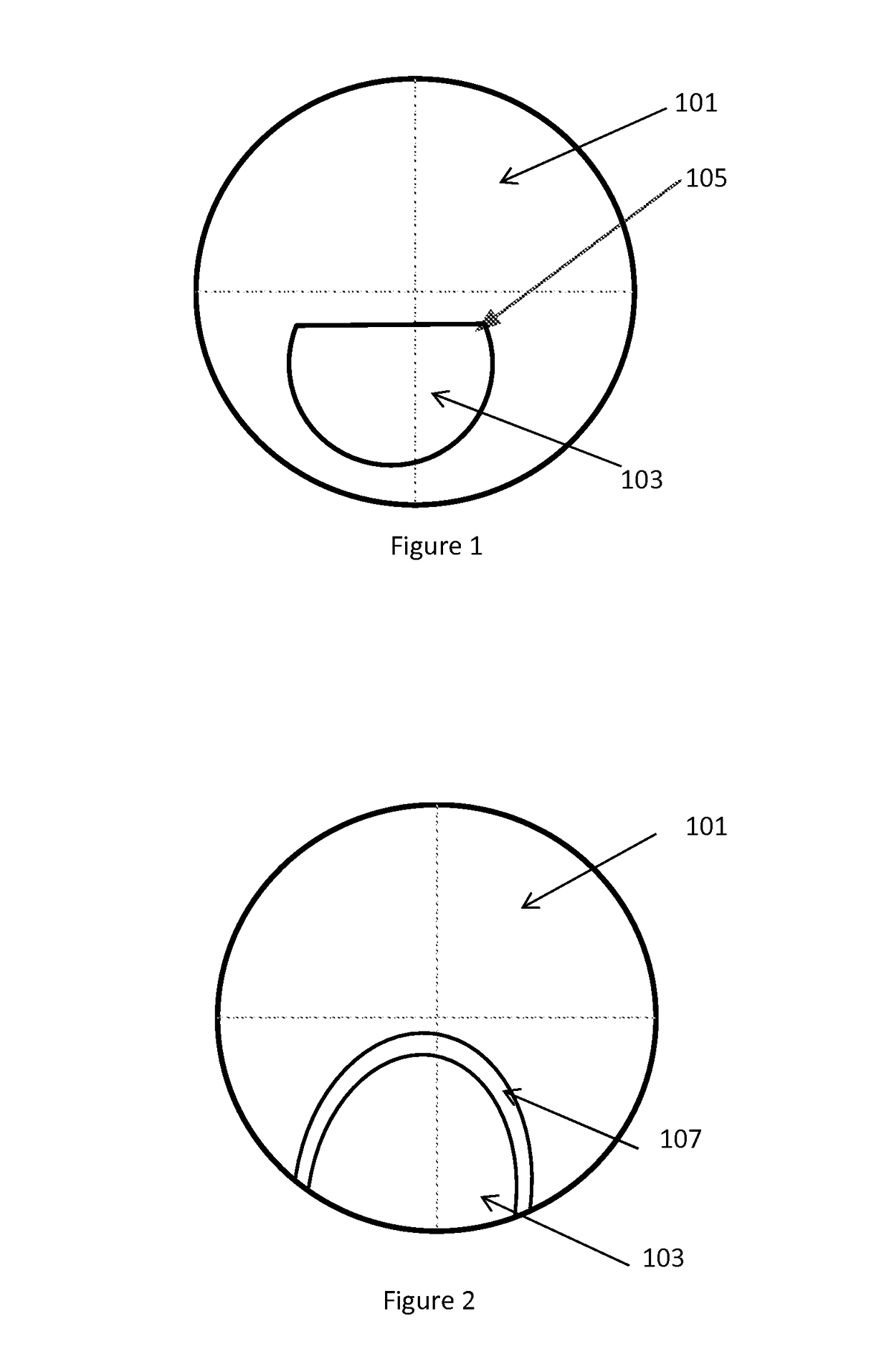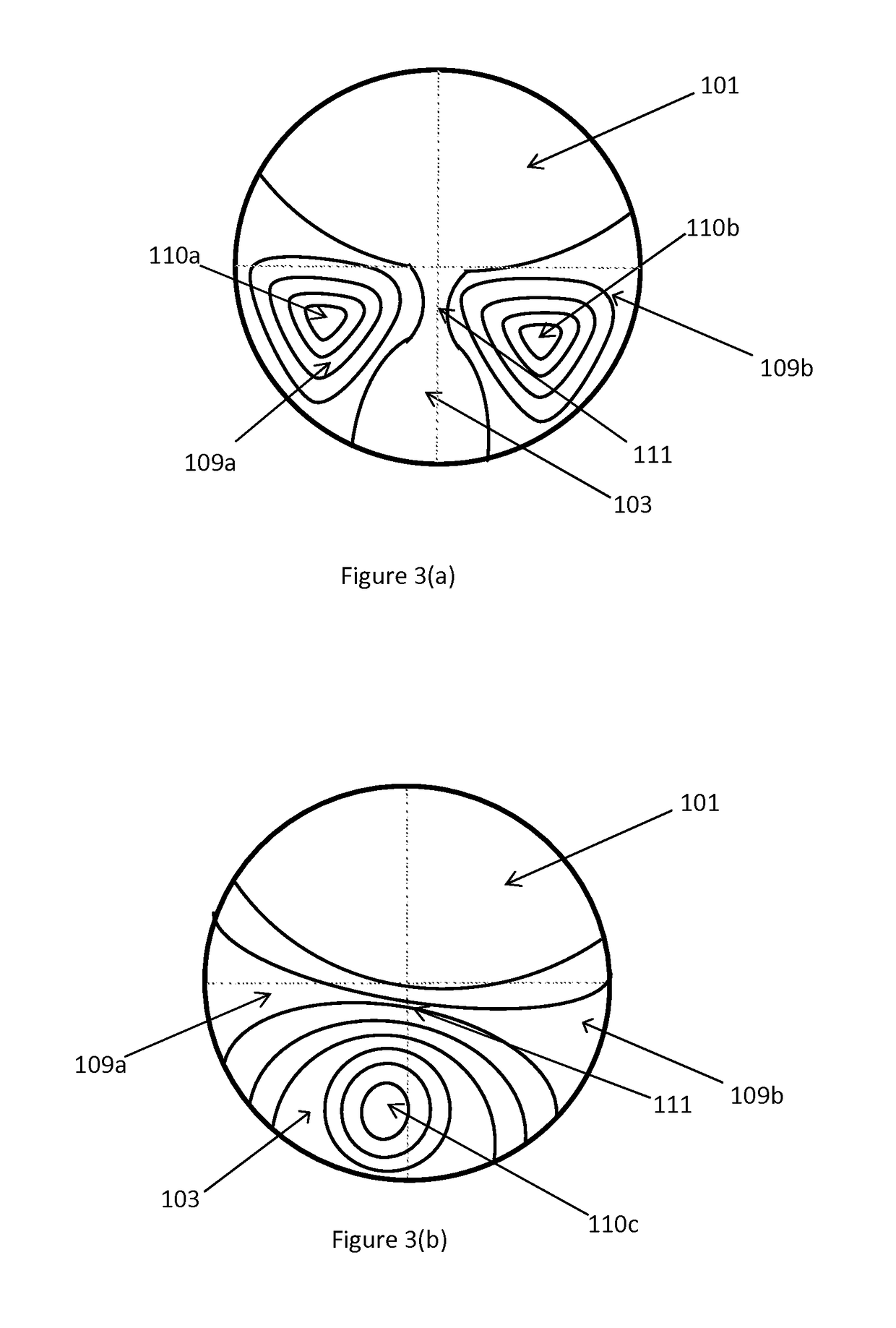Quasi progressive lenses for eyewear
a progressive lens and eyewear technology, applied in the field of ophthalmic lenses, can solve the problems of reducing visual quality, eye discomfort, and patient experience loss of image, and achieve the effects of reducing visual experience, reducing visual quality, and gradually increasing optical power in the corridor
- Summary
- Abstract
- Description
- Claims
- Application Information
AI Technical Summary
Benefits of technology
Problems solved by technology
Method used
Image
Examples
Embodiment Construction
[0024]It is to be understood that the figures and descriptions of the present invention have been simplified to illustrate elements that are relevant for a clear understanding of the present invention, while eliminating, for the purpose of clarity, many other elements found in typical lenses, lens design and / or manufacturing methods, and eyewear. Those of ordinary skill in the arts can recognize that other elements and / or steps are desirable and may be used in implementing the embodiments described herein.
[0025]As used herein, the term “fitting point” may indicate a point on a lens as mounted in a spectacle frame, aligned with the patient's center of the pupil in its distance viewing position when the patient is looking straight ahead.
[0026]The term “clean” used in reference with an optical zone or area including a powered surface indicates that optical zone or area has residual cylinder power or aberrations below a threshold (e.g., less than 1.0 Diopter, less than 0.75 Diopter, les...
PUM
 Login to View More
Login to View More Abstract
Description
Claims
Application Information
 Login to View More
Login to View More - R&D
- Intellectual Property
- Life Sciences
- Materials
- Tech Scout
- Unparalleled Data Quality
- Higher Quality Content
- 60% Fewer Hallucinations
Browse by: Latest US Patents, China's latest patents, Technical Efficacy Thesaurus, Application Domain, Technology Topic, Popular Technical Reports.
© 2025 PatSnap. All rights reserved.Legal|Privacy policy|Modern Slavery Act Transparency Statement|Sitemap|About US| Contact US: help@patsnap.com



